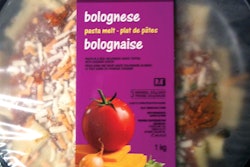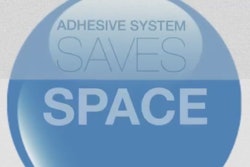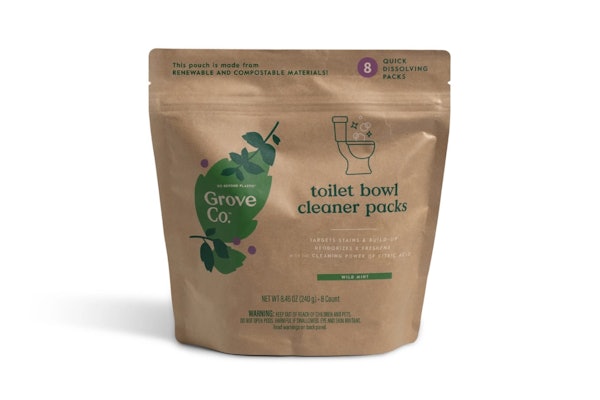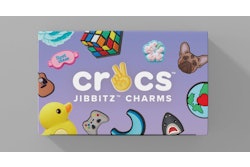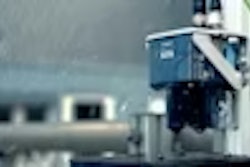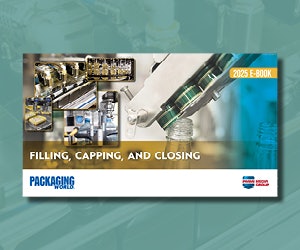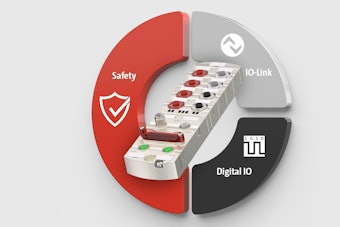This is driven by documentation concerns (i.e., traceability) and the growing realization that all space is marketing space; so, cases, once considered dumb carriers, are now being leveraged to display corporate branding. Corrugated cases are moving closer to primary packaging.
Also, ink-jet technology has improved considerably. Connectivity and footprints are smaller, and machines are easier to use. There are common touchscreen interfaces, levels of control, and higher resolutions. Instead of bottles of ink that you turn upside down, today’s technology features self-sealing cartridges and meters for easy visual checks.
Here are some best practices to follow and pitfalls to avoid when buying coding/marking technology for cases and pallets:
1. Understand your application fully to reduce costs. It’s cheaper to use ink-jet than it is to use a label, but will your application allow for it alone? Assess the technology in detail in terms of what you’re doing. Research the technical aspects of coding and marking to fully understand the role of yield, imaging, and performance to compare models and brands. Learn how the equipment works; understand what different yield and imaging capacities mean for your specific applications.
2. Ensure that coding quality will meet customer needs. Large-character printers may not give you the highest-quality scannable code. Companies such as Walmart want better-quality coding on what they call high-velocity goods, which they process in a highly automated warehouse. For your product to qualify as a high-velocity good, you may find that print-and-apply technology works best, but at a higher total cost of ownership, including equipment and consumables (labels and ink).
3. Understand the impact of product distribution. Refrigerated items will go through freezers and refrigerators. Be aware of where they sit at ambient temperatures, where condensation is a risk. If the ink and glue on the label aren’t designed for your distribution cycle, the label will likely be compromised and can even fall off. Your distribution process may move through different environments, so consider how they will challenge the packaging materials used.
4. Assess the impact of recycled content. Corrugated cases come with increasingly higher recycled content, which can impact label appearance, label adherence, and printing. The higher the recycled content, the darker the box. Sometimes it is necessary to print a light background before applying a bar code to a case to obtain a functional contrast.
5. Closely track database activity. Database integration ensures that coding on the cases ties into the package itself. Handling hasn’t really changed, but the information you want on the cases has. For example, the Produce Traceability Initiative (PTI) is only a guideline; how you implement it depends on your customer. If you’re doing bar codes, the most important thing is that you have a good, scannable image. Know your customers, as they will drive the standards you’ll have to meet.
6. Be ready for changes. The packaging landscape is increasingly fluid. Retailers such as Costco and Sam’s Club are driving a trend toward shelf-ready cases. More companies are conscious that packaging space has become a branding and messaging opportunity. Due to the economic climate of the past few years, anything to get the message out rules. Corrugated cases used to be generic; in some instances, they're moving closer to primary packaging.
7. Consider more than price. Besides cost, a host of factors need to be considered before buying coding and marking equipment, including the equipment’s history of use in applications similar to yours. Buying a system or machine because it is on clearance, or is the highest priced so it “must” be the best, is shortsighted, as is thinking that the mid-priced item is most sensible. Exercising due diligence is essential to successful equipment specification. Contact customer references who have purchased and use the equipment in a similar setting to obtain feedback on performance and reliability.
8. Avoid generic equipment. Generic coding and marking equipment typically suits businesses with very basic needs. Do you need more unique solutions or customizable, robust functionality? Opt for an equipment provider that can grow and adapt as your company’s vision and objectives evolve in response to the market.
9. Don’t forget maintenance and repair. Dig deep to fully understand the equipment reliability. Again, reach out to current users of the equipment to gain insight into daily maintenance as well as the floor perspective. Ask about operating costs related to the life of the machine in terms of ink, maintenance frequency, and the cost of repairs and parts replacement. You may think the up-front cost is the biggest factor; however, the lifetime costs can put a big dent in the budget and affect the supply chain relative to production schedules.
10. Consider online case printing. Instead of housing pallets of preprinted cases, consider moving to generic cases that can be printed online and labeled for any SKU. This creates a tremendous reduction in inventory. The print quality of digital and online case-printing systems has improved considerably, making this an option well worth exploring.
Liked this article? Download the entire playbook here.



